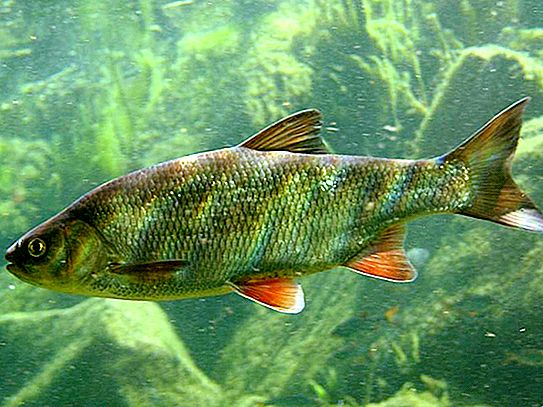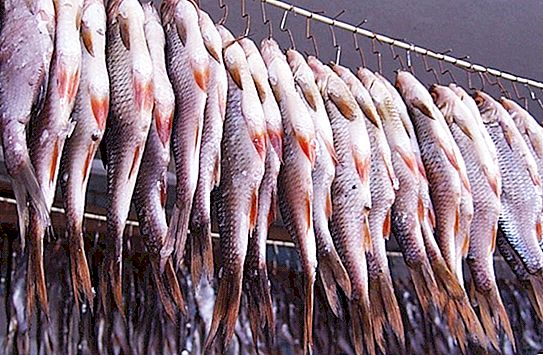Most fishermen, including those who are proud of their rich experience and serious trophies, will not be able to immediately recall what a small mohtik fish looks like or where it lives. So it is not superfluous to talk about her in order to fill this knowledge gap.
Habitat
To begin with, it is worth saying that the mohtik fish (photos are presented as illustrations in the article) is a variety of the fishing trophy - dace, much more famous in our country. This name he received mainly in the Yamal-Nenets and Khanty-Mansi Autonomous Districts. Its other local name is megdy.

It is found mainly in rivers, but it is also sometimes possible to catch mohtics in lakes. Prefers ponds with dense soil - coarse sand or small pebbles.
In contrast to the dace that lives in the European part of Russia, it is not kept in small flocks or alone, but in huge flocks. This is especially noticeable during the spring and autumn migration - to the upper reaches for spawning and vice versa. At this time, swarms of mohtik can reach truly gigantic sizes - many hundreds of thousands of individuals.
It is not surprising that some rivers in Siberia were named after this amazing fish - Yeltsovka, Yeltsovaya and others.
Appearance
Outwardly, the mohtik is similar to dace, which, in fact, is. The body is elongated, slightly flattened. Similar to roach or ide, but significantly inferior to them in size. In most cases, small individuals are caught - up to 20 centimeters long and weighing no more than 120 grams.
However, in some rivers, real giants sometimes still come across - they talk about individuals weighing up to 450 grams! For such local peoples even came up with a separate name - "mohtar", distinguishing them from a flock of small brothers.
Color can vary significantly, primarily depending on the color and nature of the bottom in the area where the fish was born and raised. The temperature at which it developed also exerts some attention on the appearance.

But most often there are fish with bright gray sides having a slightly bluish tint. The abdomen is silvery, light, almost white. But the back is dark, has a metallic shade - in order not to catch the eye of a bird of prey that can attack from above. The dorsal and caudal fins are dark gray, but the ventral and anal fins are yellow, in some cases even bright orange.
Main diet
In food, the mohtik cannot boast of pickiness - it eats almost any prey that catches your eye and is suitable in size. It feeds mainly on small invertebrates - mollusks, caddis flies, bloodworms and other small worms.
In summer, the diet is significantly enriched thanks to surface insects. Mokhtik willingly grabs mayflies, mosquitoes, midges, grasshoppers, who inadvertently fell into the water.
Therefore, we can confidently say that he lives in different layers of water - from the bottom to the top.
Eating
Some experts rightly consider mohtik one of the most delicious fish in the Khanty-Mansi Autonomous Okrug and the Yamal-Nenets Autonomous Area. Unlike ordinary dace, it is thicker, it fat well by the end of summer. Therefore, the fish is perfect for frying and salting. The meat is very tender, tasty, for which it is highly appreciated by true gourmets.

However, when eating fish that has not undergone heat treatment, you should be careful. Experienced fishermen are always interested: mohtik - opisthorchiasis fish or not? The fact is that many fish species are susceptible to attacks by parasitic worms of opisthorchiasis. And mohtik is one of them, like carp, roach, bream, tench, dace, ram.
Opisthorchiasis is quite dangerous - when it enters the human body, eggs develop successfully, and hatched worms inflict a serious blow to the liver, gradually destroying it, turning a strong, healthy, flowering person into a disabled person.
When eating well-fried fish, there is no such danger, but salted fish that does not undergo heat treatment can cause many serious problems. So, before you eat it, you should find out if there have been any recent cases of the disease in the vicinity of those places where the fish were caught.
Breeding
Mokhtik begins to multiply at the age of two years, when it reaches a size of about 10-12 centimeters. Long spawning - from mid-March to the end of May. First of all, it depends on the weather in a particular year, the water temperature in the river. To throw caviar, the fish rises to the upper reaches of the rivers, often go into deep, quiet backwaters and even small lakes. In some cases, rivers and flooded meadows with dense grass become the place. But most often, the mohtik prefers to spawn near large stones, on sandy ground, as well as near algae, snags.

One large, adult female can lay up to 18 thousand eggs at a time. The eggs are quite large - with a diameter of up to 1.5 millimeters, yellow, sometimes saturated amber.




